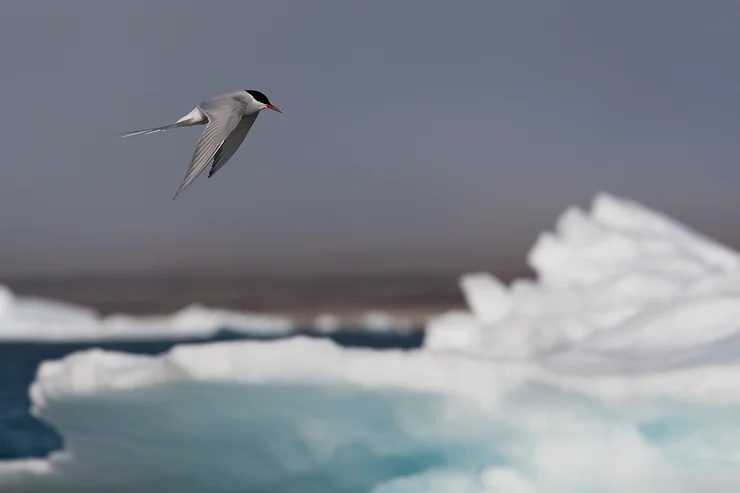The Arctic Tern, scientifically known as Sterna paradisaea, is a remarkable bird species renowned for its extraordinary long-distance migrations. These incredible birds are true masters of the skies, covering astonishing distances as they travel between their breeding grounds in the Arctic and their wintering areas in the Antarctic. Let´s discover the astonishing journey and migration of the arctic tern.

Astonishing Migration Route:
The Arctic Tern's migration route is nothing short of a natural wonder. It embarks on a journey of approximately 44,000 miles (70,900 kilometers) or more in a round-trip, which is longer than any other bird's migration. This journey takes them from their Arctic breeding grounds to their wintering areas near the Antarctic Circle and back. The distance is equivalent to circumnavigating the Earth nearly twice!
When Does the Migration Occur?
The Arctic Tern's migration is closely tied to the changing seasons. It usually begins in the Arctic during the Northern Hemisphere's summer months, which are its breeding season. As autumn arrives and the days grow shorter, these terns begin their epic journey southward, heading towards their wintering areas near Antarctica.
Why Do They Migrate?
The Arctic Tern's migration is primarily driven by the search for ideal breeding and feeding grounds. During the Northern Hemisphere's summer, the Arctic provides an abundant food supply for these birds. However, as winter approaches, the Arctic environment becomes harsh and food becomes scarce. In contrast, the Antarctic summer offers a rich source of food for the terns, primarily in the form of small fish and marine invertebrates. By making this extraordinary journey, the Arctic Tern ensures access to food all year round.
Importance of Arctic Tern Migration:
The Arctic Tern's long-distance migration is of great ecological significance. As they travel between the Arctic and the Antarctic, they play a vital role in marine ecosystems by redistributing marine nutrients. Their feces, which are rich in nutrients, are deposited in various regions along their migration route, fertilizing different marine ecosystems. This process enhances the productivity of both Arctic and Antarctic waters, benefiting a wide range of marine life.
Furthermore, the Arctic Tern's incredible journey has captured the fascination of scientists, ornithologists, and bird enthusiasts alike. Studying their migration patterns provides valuable insights into bird navigation, adaptation to changing environmental conditions, and the importance of protecting their habitats in both the Arctic and Antarctic regions.
The Arctic Tern's long-distance migration stands as a testament to the resilience, adaptability, and beauty of the natural world. Their annual journey serves as a powerful reminder of the wonders of the avian kingdom and the interconnectedness of global ecosystems.
References:
"Arctic Tern - Sterna paradisaea." Audubon. https://www.audubon.org/field-guide/bird/arctic-tern
"Arctic Tern." National Geographic. https://www.nationalgeographic.com/animals/birds/a/arctic-tern/
"The Arctic Tern - extreme migration from pole to pole" - Carsten Egevang https://www.carstenegevang.com/single-post/the-arctic-tern-extreme-migration-from-pole-to-pole
